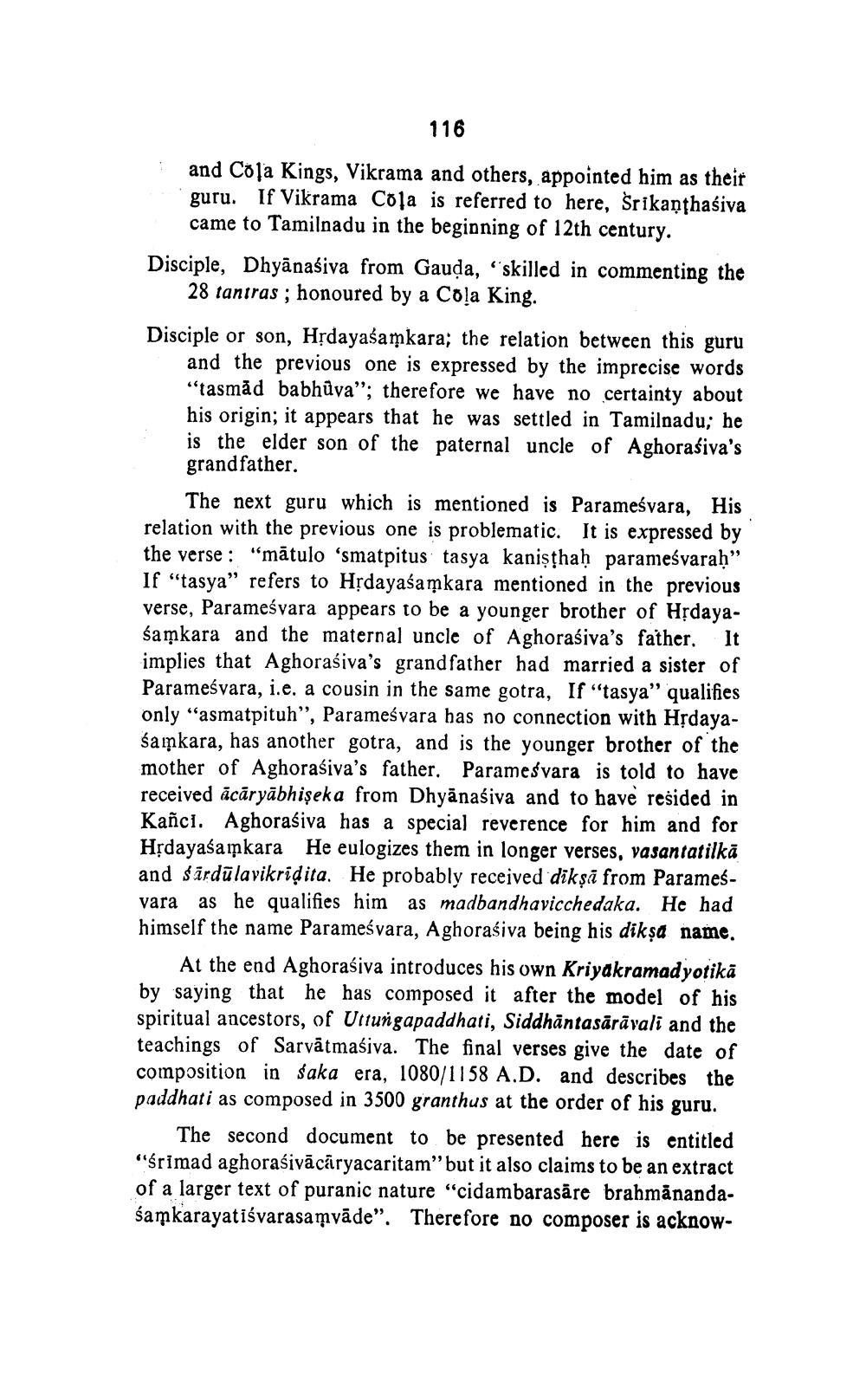Book Title: Raja Raja The Great Author(s): Anantacharya Indological Research Institute Publisher: Anantacharya Indological Research Institute View full book textPage 6
________________ 116 and Cosa Kings, Vikrama and others, appointed him as their guru. If Vikrama Cola is referred to here, Srikanthaśiva came to Tamilnadu in the beginning of 12th century. Disciple, Dhyanaśiva from Gauda, “skilled in commenting the 28 tantras ; honoured by a Cola King. Disciple or son, HỊdayasamkara; the relation between this guru and the previous one is expressed by the imprecise words "tasmăd babhùya”; therefore we have no certainty about his origin; it appears that he was settled in Tamilnadu; he is the elder son of the paternal uncle of Aghoraśiva's grandfather. The next guru which is mentioned is Parameśvara, His relation with the previous one is problematic. It is expressed by the verse : "mātulo 'smatpitus tasya kanisthah parameśvarah" If "tasya” refers to HỊdayaśamkara mentioned in the previous verse, Parameśvara appears to be a younger brother of Hşdayasamkara and the maternal uncle of Aghoraśiva's father. It implies that Aghoraśiva's grandfather had married a sister of Parameśvara, i.e. a cousin in the same gotra, If "tasya" qualifies only "asmatpituh", Parameśvara has no connection with Hrdayaśamkara, has another gotra, and is the younger brother of the mother of Aghoraśiva's father. Paramešvara is told to have received ācāryābhişeka from Dhyānaśiva and to have resided in Kanci. Aghoraśiva has a special reverence for him and for Hrdayasamkara He eulogizes them in longer verses, vasantatilkā and sārdūlavikridita. He probably received dikşi from Paramesvara as he qualifies him as madbandhavicchedaka. He had himself the name Parameśvara, Aghoraśiva being his dikșa name. At the end Aghoraśiva introduces his own Kriyakramad yotikā by saying that he has composed it after the model of his spiritual ancestors, of Uttungapaddhati, Siddhäntasarāvali and the teachings of Sarvātmaśiva. The final verses give the date of composition in saka era, 1080/1158 A.D. and describes the paddhati as composed in 3500 granthus at the order of his guru. The second document to be presented here is entitled "Grimad aghoraśivācāryacaritam”but it also claims to be an extract of a larger text of puranic nature “cidambarasāre brahmānandaśamkarayatiśvarasamyāde". Therefore no composer is acknowPage Navigation
1 ... 4 5 6 7 8 9 10 11 12 13 14
